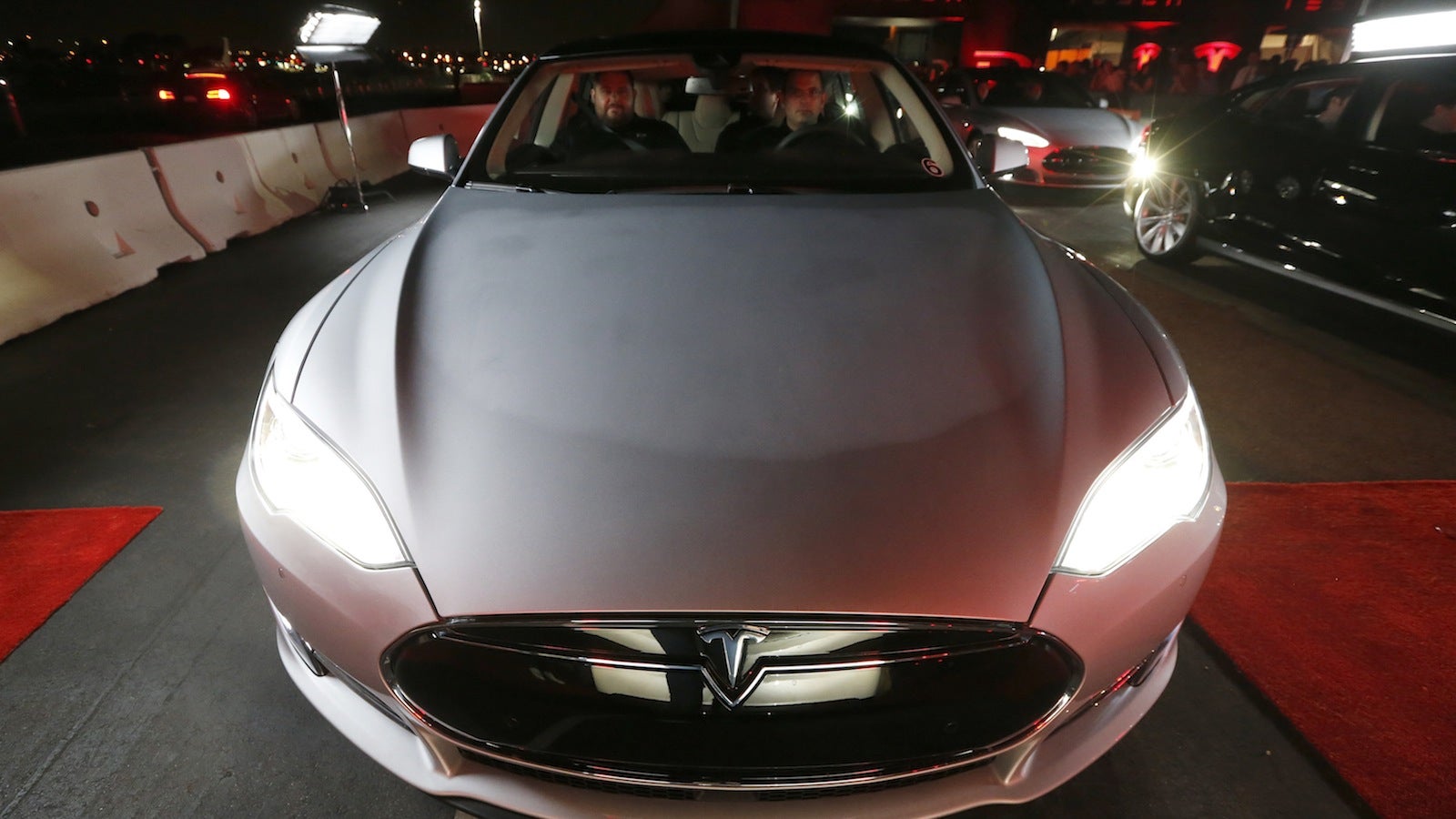Why selling cars in India may be Tesla’s toughest challenge yet
American electronic car maker Tesla is hugely popular in the US and Europe, and recently outsold established automakers such as Jaguar, Cadillac, Porsche and Mitsubishi in California.


American electronic car maker Tesla is hugely popular in the US and Europe, and recently outsold established automakers such as Jaguar, Cadillac, Porsche and Mitsubishi in California.
Now, the California-based electric car maker is trying to make inroads in India—which is on the cusp of becoming the third-largest automotive market in the world.
But selling its luxury electric vehicles here is going to be a daunting task for the company.
First of all, the Tesla’s high-end price tag makes it appealing to just a tiny fraction of India’s car-buying public. And secondly, India is wracked by power outages and blackouts—with an overall energy shortfall of more than 42 billion kilowatt hours (pdf), making investing in an electronic car a risky proposition for most drivers.
Nonetheless, Tesla’s chief information officer, Jay Vijayan, is optimistic. ”We know there is a good potential in India for Tesla,” he told reporters Nov. 19.
To counteract the price issue, the car company is working on a smaller, affordable sedan code-named ‘Tesla Model 3’ for emerging markets, according to the Economic Times. Tesla’s Model S can cost over Rs6,100,000 ($100,000), but the company is looking to go for a cheaper price tag of Rs1,800,000 ($30,000) to Rs2,400,000 ($40,000) in India. It plans to build an assembly plant here as well.
The electricity shortage and the infrastructure problems are going to much tougher to crack.
Despite healthy growth in passenger vehicles, “the electric vehicle (EV) sector in India, however, continues to struggle,” according to India Auto Report. “The idea of ‘going electric’ remains a hard one to sell to an average Joe in India,” it adds.
Reva, India’s first commercial electric car that has been around for over a decade, didn’t find many takers, selling fewer than 500 cars a year. “We are struggling to maintain a healthy sales traction… Concerns over battery and the higher price compared to petrol or diesel vehicles have also worked against customer acceptance,” said Chetan Maini, CEO of Mahindra Reva told The Economic Times.
The Indian government is trying to promote the use of electric vehicles with its National Electric Mobility Mission Plan 2020 (PDF), under which it plans to invest Rs14,000 crore ($2.25 billion) to build the infrastructure required for electric vehicles. But progress has been very slow so far and India far lags the rest of the world in overall electric vehicle purchases.
Tesla’s balance sheet is impressive and the company has racked up steady sales increases over the last six quarters, partly because there is an appetite for electric and hybrid cars in the US and Europe—two of its biggest market. The company is built on a willingness to invest without hoping for immediate profits, and they’ve spent months trying to woo China.
But even the cheaper Tesla Model 3 is going to have a limited pool of buyers in India—the tiny group of millionaires trying to project themselves as environmentally conscious, said Deepesh Rathore, managing director of Emerging Markets Automotive Advisers, a consultancy.
“It will be good as an image builder… but it in most cases it will be a second car,” he added.